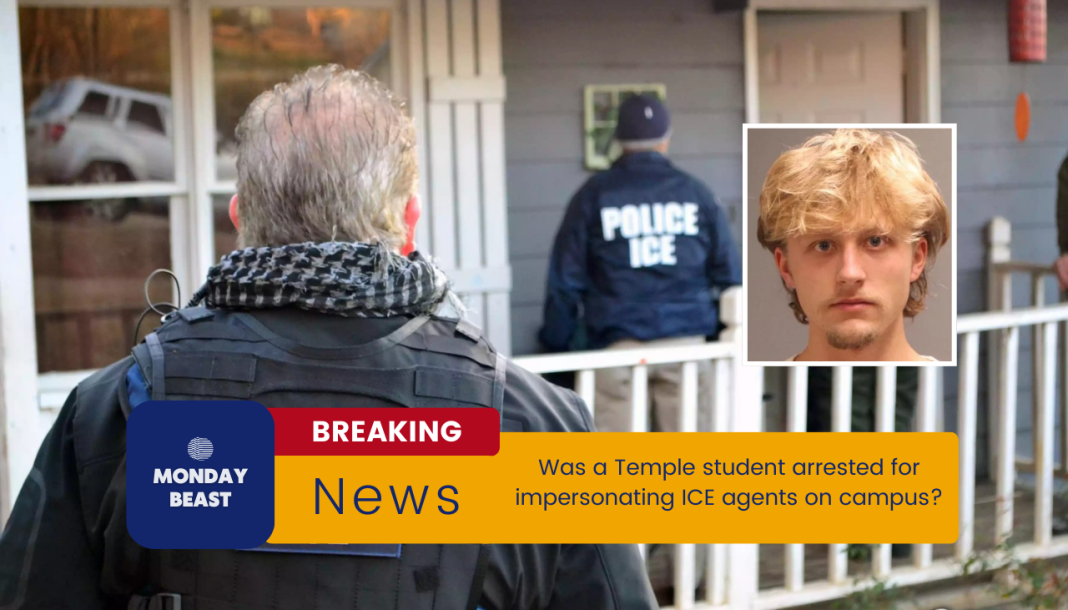In a shocking incident that rocked Temple University, a student was arrested for impersonating an ICE agent. This event, which raises significant questions about safety on campus, unfolded on the evening of February 1.

Aidan Steigelmann, 22, was not acting alone. Two unidentified accomplices accompanied him, both allegedly dressed in shirts bearing the words ‘Police’ and ‘ICE.’ The trio attempted to enter residence halls at the university, a move that alarmed students and staff alike. What could possess a student to engage in such reckless behavior?
Around 9:30 p.m., the group was denied entry to the Johnson and Hardwick Residence Halls. Instead of complying, they seemingly continued their disruptive antics. Ten minutes later, campus security was alerted to the impersonators. Witnesses noticed them causing a stir among students, igniting fears and questions regarding their intentions.

The gamble quickly unraveled. Authorities used surveillance footage to identify the suspects and track down Steigelmann’s Jaguar SUV. By 10 p.m., police apprehended him on North 12th Street. Was it a thrill-seeking stunt or a misguided quest for attention? Whatever the motive, the consequences were severe.
Steigelmann faced charges for impersonating a public servant, a serious offense that carries potential jail time. The next day, Temple University swiftly placed him on interim suspension. Their statement emphasized a zero-tolerance policy regarding such behavior. But what does this incident reveal about the current climate on campuses nationwide?

The university also reminded students about safety protocols. They had recently assured the campus community that no ICE agents were officially present. This was following heightened tensions due to federal immigration policies. With fears often swirling about ICE’s presence, how might this incident affect the way students view safety on their own campus?
That particular night at Temple, fear mounted, as students wondered: Are we truly safe? The disruption, while perhaps intended as a prank, highlighted underlying anxieties about immigration enforcement. Many students might now feel more vulnerable, questioning their security amidst escalating national rhetoric.
In the wake of this fiasco, Temple University reiterated its commitment to student safety. They stated, ‘Any student found responsible for this conduct will face disciplinary action up to expulsion.’ This approach raises interesting discussions about the balance between student freedoms and safety measures on campus.
As the investigation progresses, it’s important to remember stories behind the headlines. Sure, Steigelmann’s actions might seem absurd to some. Yet many students may recognize the actions representative of broader tensions in society. The implications of impersonation, fears tied to immigration, and issues surrounding campus safety intersect in complex ways.
In conclusion, as Temple University looks to navigate this unprecedented situation, one thing is clear: incidents like these should encourage deeper conversations about safety, accountability, and the well-being of all campus members. How might students, faculty, and administration foster an environment of understanding? Ultimately, such discussions pave the way for a better, safer community for all.




